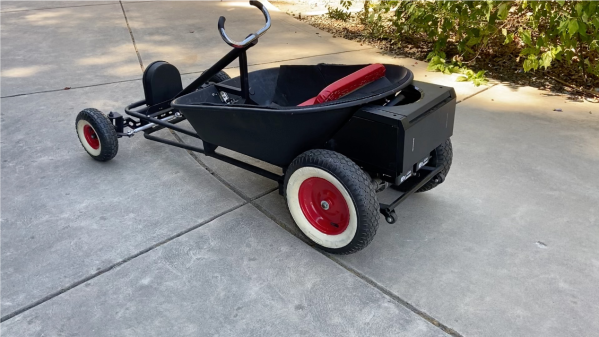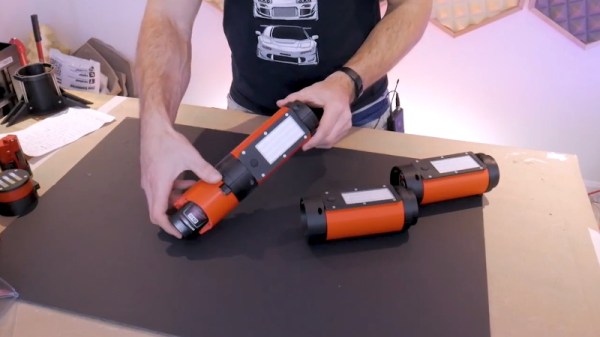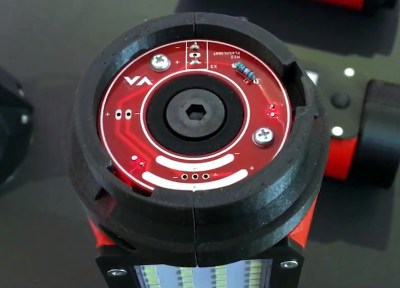These days, a lot of people barely even say hello to their neighbors. But not [dewey302]. They’re so tight with the people next door that they built this bad-ass electric mini rat rod for the neighbors’ five-year-old kid. Talk about community!
Nearly every bit of this rod is recycled — the body is a wheelbarrow, the transaxle is from a mobility scooter, and the frame was welded together from scrap tubing including the wheelbarrow itself, and old bike or two, and some broken lawn chairs. The rear wheels are also from the ‘barrow, though the front ones were purchased (one of few new parts. Power comes from a pair of 18 V tool batteries wired in series and running through the Curtis controller from the scooter. Depending on the weight of the driver, this baby will do 10-12 MPH.
We love the look of this little rat rod, and wish we were [dewey302]’s neighbor. When you’re done poring over the pile of build pictures, be sure to watch [dewey302] and [The Kid] tear up the cul-de-sac in the video after the break.
You may have noticed the mailbox grille. Surprisingly, this is not the first mail-themed rat rod we’ve covered. Here’s one that really delivers.














